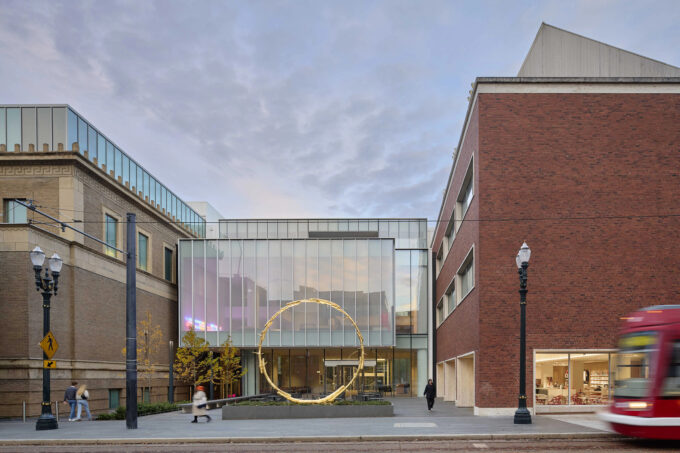- Home
- Articles
- Architectural Portfolio
- Architectral Presentation
- Inspirational Stories
- Architecture News
- Visualization
- BIM Industry
- Facade Design
- Parametric Design
- Career
- Landscape Architecture
- Construction
- Artificial Intelligence
- Sketching
- Design Softwares
- Diagrams
- Writing
- Architectural Tips
- Sustainability
- Courses
- Concept
- Technology
- History & Heritage
- Future of Architecture
- Guides & How-To
- Art & Culture
- Projects
- Interior Design
- Competitions
- Jobs
- Store
- Tools
- More
- Home
- Articles
- Architectural Portfolio
- Architectral Presentation
- Inspirational Stories
- Architecture News
- Visualization
- BIM Industry
- Facade Design
- Parametric Design
- Career
- Landscape Architecture
- Construction
- Artificial Intelligence
- Sketching
- Design Softwares
- Diagrams
- Writing
- Architectural Tips
- Sustainability
- Courses
- Concept
- Technology
- History & Heritage
- Future of Architecture
- Guides & How-To
- Art & Culture
- Projects
- Interior Design
- Competitions
- Jobs
- Store
- Tools
- More
Top Architecture Schools in the US: Find the Best Programs for Your Future
Discover the top architecture schools in the US, from Ivy League institutions to public and private universities. Learn about NAAB-accredited programs, sustainable design, cutting-edge technology, and career-aligned opportunities like internships and industry connections. Find the perfect school to match your architectural aspirations and prepare for a thriving future in the field.

Choosing the right architecture school is a pivotal step for anyone dreaming of shaping skylines and designing spaces that inspire. In the US, we’re fortunate to have a diverse range of programs that cater to different styles, goals, and career paths. Whether we’re drawn to cutting-edge technology, sustainable design, or classical aesthetics, there’s a school that matches our vision.
With so many options, narrowing down the best fit can feel overwhelming. That’s why it’s essential to explore what each program offers, from faculty expertise to unique opportunities. Let’s dive into what makes architecture schools in the US stand out and how they prepare us for a thriving career in this dynamic field.

Table of Contents
ToggleOverview Of Architecture Schools In The US
Architecture schools in the US offer diverse options tailored to various interests, including urban planning, structural design, and sustainable architecture. With over 120 accredited schools, students can pursue paths ranging from Bachelor of Architecture (B.Arch) programs to advanced Master of Architecture (M.Arch) degrees.
Accredited Programs: Accreditation by the National Architectural Accrediting Board (NAAB) ensures high-quality education. Programs like those at Harvard University, MIT, and the University of Southern California are widely recognized.
Specialized Focus Areas: Many schools emphasize specific areas, such as green building technologies at the University of Oregon or digital fabrication techniques at Carnegie Mellon University.
Renowned Faculty And Resources: Leading schools feature experienced faculty, state-of-the-art labs, and access to cutting-edge software. For instance, the Columbia Graduate School of Architecture, Planning, and Preservation offers rich resources for exploratory design work.
Career Connectivity: Architecture programs often include professional networking opportunities. Schools like the University of Texas at Austin provide internships and career fairs to ensure industry connections.
Each option presents unique opportunities for aspiring architects to align their education with career aspirations.

Criteria For Choosing The Right School
Selecting the right architecture school in the US involves examining critical factors, ensuring the program aligns with career goals, interests, and educational needs. Evaluating these elements can help identify the institutions that provide the best path for success.
Accreditation And Reputation
Accreditation ensures the program meets established quality standards. Schools accredited by the National Architectural Accrediting Board (NAAB) provide degrees recognized for licensure. Institutions like Cornell and Rice University have strong reputations due to their rigorous programs. When assessing a school, look for rankings, alumni achievements, and employer recognition to gauge its prestige.
Curriculum And Specializations
A well-designed curriculum focuses on foundational and advanced architectural principles. Some schools specialize in areas like sustainable design, urban planning, or digital fabrication. For example, Carnegie Mellon emphasizes computational design, while the University of Oregon is known for its green architecture focus. Understanding the program’s core and elective offerings can ensure alignment with personal and professional interests.
Facilities And Resources
Access to state-of-the-art facilities supports innovation and skill development. Look for resources like advanced fabrication labs, 3D printing studios, and digital design software. Schools such as MIT and SCI-Arc are recognized for their cutting-edge technological resources. Libraries, dedicated workspace, and access to modern tools also play a significant role in enhancing academic experiences.
Location And Campus Life
The school’s location influences networking, internship availability, and industry connections. Urban campuses, such as Columbia University in New York City, provide exposure to thriving architectural practices. Consider campus amenities, student organizations, and cultural diversity that contribute to overall life quality. Proximity to architectural hubs can also impact opportunities for professional growth and collaboration.
Top Architecture Schools In The US
Numerous architecture programs across the US stand out for their academic excellence, resources, and career preparation. Here, we explore some of the most distinguished institutions under specific categories.
Ivy League Architecture Programs
Ivy League schools offer highly ranked architecture programs known for integrating theory with practical design education.
- Harvard University: The Harvard Graduate School of Design (GSD) provides Master of Architecture (M.Arch) and Doctor of Design (DDes) programs. The GSD emphasizes interdisciplinary learning, advanced research, and real-world problem-solving in urban design.
- Columbia University: Columbia’s Graduate School of Architecture, Planning and Preservation (GSAPP) offers programs like the M.Arch and Master of Science in Advanced Architecture Design (MSAAD). Students benefit from cutting-edge research in fields like digital fabrication and urban studies.
These Ivy League institutions attract students with top faculty, global networks, and access to architectural innovations.
Prominent Public Universities
Public universities provide NAAB-accredited architecture degrees with affordability and strong regional impact.
- University of California, Berkeley: UC Berkeley’s College of Environmental Design offers Bachelor of Arts (BA) in Architecture and Master of Architecture (M.Arch) programs. Featuring a focus on sustainability and urban planning, Berkeley prepares students for leadership in environmental design.
- University of Texas at Austin: UT Austin’s School of Architecture provides a variety of degrees, including B.Arch and M.Arch, with incorporation of advanced technological tools and hands-on design studios.
Access to state-of-the-art laboratories, diverse faculty, and collaboration with local industries enhances learning at these public institutions.
Renowned Private Institutions
Private schools often lead in personalized education and specialization opportunities within architecture.
- Massachusetts Institute of Technology (MIT): MIT’s School of Architecture and Planning is globally recognized for programs focusing on computational design, innovative technologies, and engineering integration.
- Rhode Island School of Design (RISD): RISD’s Bachelor and Master of Architecture programs emphasize artistic principles and creativity while covering technical training extensively.
These schools combine rigorous coursework with premier resources, enabling students to excel in diverse architectural disciplines.

Challenges And Opportunities In US Architecture Studies
Architecture programs in the US offer both significant challenges and promising opportunities for students. Balancing rigorous coursework with experiential learning prepares future architects for an evolving field.
Competitive Admission Process
Gaining admission to top architecture programs is demanding. Many schools, such as Harvard and MIT, require a strong academic record, compelling portfolios, and demonstration of creative potential. Portfolio development is often a critical hurdle, as it must showcase a candidate’s design thinking and technical skills through unique projects. Additionally, standardized test scores and recommendation letters play essential roles in evaluating applicants holistically. This competitive process ensures that students admitted to these programs possess the dedication and innovative thinking necessary for success.
Internship And Job Placement Opportunities
Internships significantly enhance architecture education and career readiness. Many US schools integrate internship programs, partnering with renowned firms like Gensler and SOM to provide practical experience. For instance, Columbia offers networks connecting students to New York-based firms, while Texas A&M links students with industry experts in sustainable design. Post-graduation, job placement rates at schools such as USC and Virginia Tech exceed 85%, reflecting the industry’s demand for skilled professionals and the efficacy of these programs in preparing graduates. Students leveraging internship experiences often secure positions in competitive urban markets, aligning academic goals with career aspirations.

Trends In Architecture Education
Architecture education in the US continues to evolve, reflecting shifts in industry demands and global challenges. Key trends include a focus on sustainability, innovation, and technological integration in design.
Focus On Sustainability And Innovation
Programs increasingly emphasize sustainable architecture to address climate change and environmental concerns. Schools incorporate green technologies, energy-efficient design, and eco-friendly materials in their curricula. For example, courses on passive design strategies or LEED certification have become essential components. Institutions like UC Berkeley focus on sustainable urban development, preparing students to create resilient and efficient buildings.
Innovation plays a central role as architecture schools adopt interdisciplinary approaches. Many programs combine architecture with fields like urban planning, business, or environmental science. Harvard’s Graduate School of Design, for instance, fosters collaboration across disciplines to encourage innovative architectural solutions. Students are challenged to rethink traditional designs while addressing societal needs.
Integration Of Technology In Design
Technology has transformed architecture education, making digital tools integral to the learning process. Schools integrate software like AutoCAD, Rhino, and Revit into design courses to enhance technical proficiency. Texas A&M’s program includes workshops on computational design and parametric modeling, helping students master advanced digital skills.
Emerging technologies such as virtual reality (VR), augmented reality (AR), and 3D printing are reshaping the design process. Institutions like MIT employ VR and AR for immersive project visualizations, offering students new ways to explore spatial concepts. Similarly, fabrication labs equipped with 3D printers enable hands-on experimentation with complex geometries. These technological advancements prepare students for a rapidly evolving architectural landscape.
Conclusion
Architecture schools in the US provide a wide array of opportunities for aspiring architects to develop their skills and specialize in areas that align with their career goals. With over 120 accredited institutions, choices range from Ivy League schools like Harvard and Columbia to public universities like UC Berkeley and private institutions such as MIT and RISD. These schools offer diverse programs, advanced facilities, and expert faculty to guide students through foundational and innovative architectural principles.
Key factors like NAAB accreditation, program reputation, and specialized curriculum areas, including sustainable design and digital fabrication, are critical when selecting the right school. Facilities such as fabrication labs and integration of technology like virtual reality enhance learning experiences while internships and industry connections strengthen career prospects. By balancing rigorous academics with experiential learning, students gain the tools needed to succeed in a rapidly evolving architectural field.
Emerging trends in architecture education, such as sustainability and technological innovation, prepare future architects to address global challenges. Schools like UC Berkeley and Harvard exemplify leadership in these fields, making it crucial to evaluate institution-specific focuses and program strengths. Maximizing educational opportunities helps align academic objectives with long-term career aspirations in architecture.
- architecture career schools USA
- architecture colleges ranking
- architecture degree programs USA
- architecture education in America
- architecture school rankings US
- best accredited architecture schools US
- best architecture colleges USA
- best architecture degrees
- best architecture degrees USA
- best architecture education programs
- best architecture programs US
- best architecture programs USA
- best architecture schools US
- best architecture universities US
- best architecture universities USA
- best design schools for architecture
- best graduate architecture programs
- best private architecture schools US
- best public architecture schools US
- best schools for architecture
- best undergraduate architecture schools
- study architecture in the US
- top architecture programs US
- top architecture schools in the US
- top universities for architecture
- US architecture education
- US colleges for architects
illustrarch is your daily dose of architecture. Leading community designed for all lovers of illustration and #drawing.
Submit your architectural projects
Follow these steps for submission your project. Submission FormLatest Posts
Events and Accidents That Commonly Lead to Wrongful Death Claims
Approximately 200,000 patients die annually due to preventable medical errors, according to...
Stylish Flooring Ideas for Small Spaces
Small spaces have unique challenges, so it's essential to think creatively. Flooring...
10 Best Christmas Gifts for Architects and Designers 2026
Looking for the perfect Christmas gift for an architect or designer in...
What are the Benefits of Compact Pile Driving Tools
A small crew walks a narrow right of way between trees and...












Leave a comment